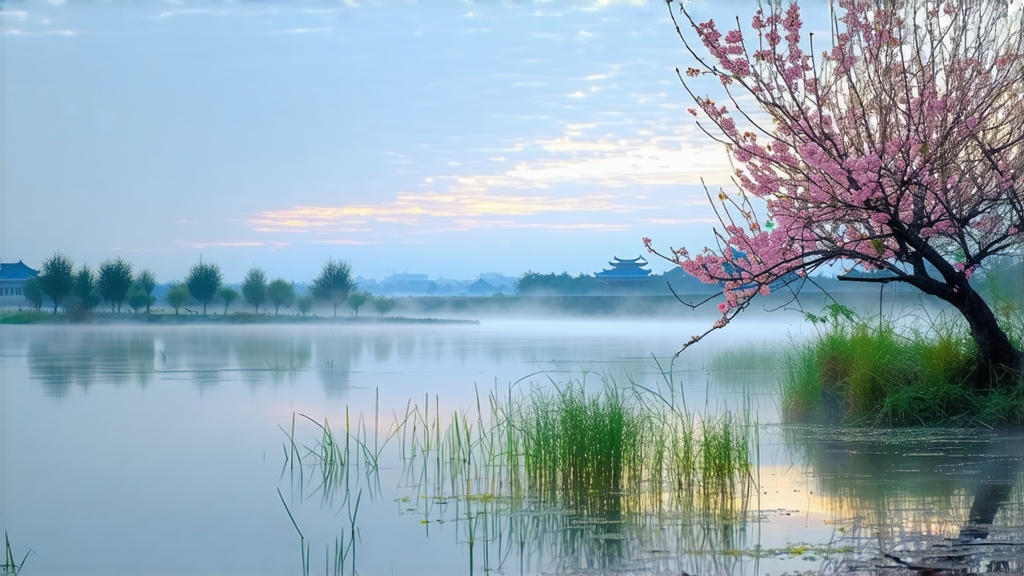
Tucked between the mist-laden hills of Dongting Mountain and the gentle ripples of Taihu Lake in Jiangsu Province, Biluochun—literally “Green Snail Spring”—has been seducing tea lovers since the late Ming dynasty. Legend claims a tea picker ran out of basket space and tucked fresh shoots between her breasts; the warmth released an intoxicating aroma that startled a passing monk, who christened the tea “Astounding Fragrance.” By the Kangxi reign (1662-1722) the Qing emperor, tasting it on his southern inspection tour, found the name too vulgar and rechristened it Biluochun for its jade-green spirals harvested in early spring. Thus a humble mountain tea entered the imperial tribute list, carried to Beijing by couriers who changed horses every ten miles to deliver the first crop before the Qingming festival.
Botanically, Biluochun belongs to the small-leaf Camellia sinensis var. sinensis. Within this single cultivar, micro-terroirs create three recognized grades: Mingqian (pre-Qingming), Yuqian (pre-Grain Rain), and Chunwei (late spring). Mingqian leaves, picked when each bud still wears its fish-scale coat of down, yield the highest concentration of linalool and geraniol, giving the famed “flowery fruity” aroma. The narrow band of terroir—only 10 km east-west and 6 km north-south on Dongting’s east and west peaks—enjoys a lake-regulated microclimate that keeps winter frost mild and spring humidity high. Peach, plum, and loquat trees interplanted among tea bushes contribute additional floral volatiles; their roots share mycorrhizal fungi with tea, subtly altering leaf chemistry. No other Chinese green tea is so deeply influenced by surrounding fruit blossoms, making Biluochun arguably the most “aromatically terroir-driven” of all green teas.
Crafting Biluochun is a race against time and oxidation. Picking starts at 5 a.m. when mountain mist still beads on the bud’s surface. The golden standard is one bud plus one unfolded leaf, no longer than 2.5 cm, weighing 0.3 g. Leaves arrive at the village workshop within two hours, spread 3 cm thick on bamboo trays to wither for 90 minutes, reducing moisture from 76 % to 68 %. What follows is a unique “killing green” (shaqing) technique performed on 140 °C copper woks brushed with local pomelo peel oil to prevent sticking. The master’s wrist executes 38 cycles of “grab, shake, rub, and fling” in 3.5 minutes, curling the bud into its signature spiral while locking in chlorophyll. Immediately the tea is transferred to an 80 °C wok for the first “rub and roll,” forming tight coils; temperature drops 10 °C every subsequent 5 minutes through three stages, each with lighter hand pressure to preserve downy tips. Final moisture rests at 6 %, yet the leaf still smells like fresh apricot because 12 % of its volatile aromatics survive, double the retention of Dragon Well. The entire process, from mountain to tin, finishes before sunset of the same day.
To brew Biluochun like a Suzhou native you need a 200 ml glass cha-bei, 3 g of tea, and water at 75 °C—just when the kettle forms pin-sized bubbles dubbed “crab eyes.” First warm the glass, then pour water to one-third height; tilt the glass and let leaves slide down the wall, preventing scald spots. Within 30 seconds the spirals unfurl like thousands of green snails dancing, releasing a pale champagne liquor. After 90 seconds the infusion peaks in amino acids, especially theanine at 1.8 mg/ml, delivering a brothy umami reminiscent of dashi. Steep again at 45 seconds, then 75; a quality batch yields five infusions, each revealing a different aromatic chord: first white peach, second loquat blossom, third fresh pea, fourth blanched almond, fifth faint lily. Never use boiling water; above 85 °C the leaf down dissolves, turning liquor cloudy and imparting astringency.
Professional cupping follows a tighter protocol: 3 g leaf, 150 ml porcelain gaiwan, 80 °C, four-minute steep. Evaluate dry leaf first: color should be “silver-green with jade frost,” the down so fine it floats when you exhale. Wet leaf aroma is scored on a 100-point grid: